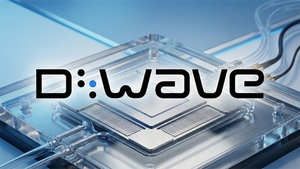
The semiconductor industry is at the precipice of a profound transformation, driven by the crucial interplay between Artificial Intelligence (AI) and Electronic Design Automation (EDA). This symbiotic relationship is not merely enhancing existing processes but fundamentally re-engineering how microchips are conceived, designed, and manufactured. Often termed an "AI Supercycle," this convergence is enabling the creation of more efficient, powerful, and specialized chips at an unprecedented pace, directly addressing the escalating complexity of modern chip architectures and the insatiable global demand for advanced semiconductors. AI is no longer just a consumer of computing power; it is now a foundational co-creator of the very hardware that fuels its own advancement, marking a pivotal moment in the history of technology.
This integration of AI into EDA is accelerating innovation, drastically enhancing efficiency, and unlocking capabilities previously unattainable with traditional, manual methods. By leveraging advanced AI algorithms, particularly machine learning (ML) and generative AI, EDA tools can explore billions of possible transistor arrangements and routing topologies at speeds unachievable by human engineers. This automation is dramatically shortening design cycles, allowing for rapid iteration and optimization of complex chip layouts that once took months or even years. The immediate significance of this development is a surge in productivity, a reduction in time-to-market, and the capability to design the cutting-edge silicon required for the next generation of AI, from large language models to autonomous systems.
The Technical Revolution: AI-Powered EDA Tools Reshape Chip Design
The technical advancements in AI for Semiconductor Design Automation are nothing short of revolutionary, introducing sophisticated tools that automate, optimize, and accelerate the design process. Leading EDA vendors and innovative startups are leveraging diverse AI techniques, from reinforcement learning to generative AI and agentic systems, to tackle the immense complexity of modern chip design.
Synopsys (NASDAQ: SNPS) is at the forefront with its DSO.ai (Design Space Optimization AI), an autonomous AI application that utilizes reinforcement learning to explore vast design spaces for optimal Power, Performance, and Area (PPA). DSO.ai can navigate design spaces trillions of times larger than previously possible, autonomously making decisions for logic synthesis and place-and-route. This contrasts sharply with traditional PPA optimization, which was a manual, iterative, and intuition-driven process. Synopsys has reported that DSO.ai has reduced the design optimization cycle for a 5nm chip from six months to just six weeks, a 75% reduction. The broader Synopsys.ai suite, incorporating generative AI for tasks like documentation and script generation, has seen over 100 commercial chip tape-outs, with customers reporting significant productivity increases (over 3x) and PPA improvements.
Similarly, Cadence Design Systems (NASDAQ: CDNS) offers Cerebrus AI Studio, an agentic AI, multi-block, multi-user platform for System-on-Chip (SoC) design. Building on its Cerebrus Intelligent Chip Explorer, this platform employs autonomous AI agents to orchestrate complete chip implementation flows, including hierarchical SoC optimization. Unlike previous block-level optimizations, Cerebrus AI Studio allows a single engineer to manage multiple blocks concurrently, achieving up to 10x productivity and 20% PPA improvements. Early adopters like Samsung (KRX: 005930) and STMicroelectronics (NYSE: STM) have reported 8-11% PPA improvements on advanced subsystems.
Beyond these established giants, agentic AI platforms are emerging as a game-changer. These systems, often leveraging Large Language Models (LLMs), can autonomously plan, make decisions, and take actions to achieve specific design goals. They differ from traditional AI by exhibiting independent behavior, coordinating multiple steps, adapting to changing conditions, and initiating actions without continuous human input. Startups like ChipAgents.ai are developing such platforms to automate routine design and verification tasks, aiming for 10x productivity boosts. Experts predict that by 2027, up to 90% of advanced chips will integrate agentic AI, allowing smaller teams to compete with larger ones and helping junior engineers accelerate their learning curves. These advancements are fundamentally altering how chips are designed, moving from human-intensive, iterative processes to AI-driven, autonomous exploration and optimization, leading to previously unimaginable efficiencies and design outcomes.
Corporate Chessboard: Shifting Landscapes for Tech Giants and Startups
The integration of AI into EDA is profoundly reshaping the competitive landscape for AI companies, tech giants, and startups, creating both immense opportunities and significant strategic challenges. This transformation is accelerating an "AI arms race," where companies with the most advanced AI-driven design capabilities will gain a critical edge.
EDA Tool Vendors such as Synopsys (NASDAQ: SNPS), Cadence Design Systems (NASDAQ: CDNS), and Siemens EDA are the primary beneficiaries. Their strategic investments in AI-driven suites are solidifying their market dominance. Synopsys, with its Synopsys.ai suite, and Cadence, with its JedAI and Cerebrus platforms, are providing indispensable tools for designing leading-edge chips, offering significant PPA improvements and productivity gains. Siemens EDA continues to expand its AI-enhanced toolsets, emphasizing predictable and verifiable outcomes, as seen with Calibre DesignEnhancer for automated Design Rule Check (DRC) violation resolutions.
Semiconductor Manufacturers and Foundries like Taiwan Semiconductor Manufacturing Company (TSMC) (NYSE: TSM), Intel (NASDAQ: INTC), and Samsung (KRX: 005930) are also reaping immense benefits. AI-driven process optimization, defect detection, and predictive maintenance are leading to higher yields and faster ramp-up times for advanced process nodes (e.g., 3nm, 2nm). TSMC, for instance, leverages AI to boost energy efficiency and classify wafer defects, reinforcing its competitive edge in advanced manufacturing.
AI Chip Designers such as NVIDIA (NASDAQ: NVDA) and Qualcomm (NASDAQ: QCOM) benefit from the overall improvement in semiconductor production efficiency and the ability to rapidly iterate on complex designs. NVIDIA, a leader in AI GPUs, relies on advanced manufacturing capabilities to produce more powerful, higher-quality chips faster. Qualcomm utilizes AI in its chip development for next-generation applications like autonomous vehicles and augmented reality.
A new wave of Specialized AI EDA Startups is emerging, aiming to disrupt the market with novel AI tools. Companies like PrimisAI and Silimate are offering generative AI solutions for chip design and verification, while ChipAgents is developing agentic AI chip design environments for significant productivity boosts. These startups, often leveraging cloud-based EDA services, can reduce upfront capital expenditure and accelerate development, potentially challenging established players with innovative, AI-first approaches.
The primary disruption is not the outright replacement of existing EDA tools but rather the obsolescence of less intelligent, manual, or purely rule-based design and manufacturing methods. Companies failing to integrate AI will increasingly lag in cost-efficiency, quality, and time-to-market. The ability to design custom silicon, tailored for specific application needs, offers a crucial strategic advantage, allowing companies to achieve superior PPA and reduced time-to-market. This dynamic is fostering a competitive environment where AI-driven capabilities are becoming non-negotiable for leadership in the semiconductor and broader tech industries.
A New Era of Intelligence: Wider Significance and the AI Supercycle
The deep integration of AI into Semiconductor Design Automation represents a profound and transformative shift, ushering in an "AI Supercycle" that is fundamentally redefining how microchips are conceived, designed, and manufactured. This synergy is not merely an incremental improvement; it is a virtuous cycle where AI enables the creation of better chips, and these advanced chips, in turn, power more sophisticated AI.
This development perfectly aligns with broader AI trends, showcasing AI's evolution from a specialized application to a foundational industrial tool. It reflects the insatiable demand for specialized hardware driven by the explosive growth of AI applications, particularly large language models and generative AI. Unlike earlier AI phases that focused on software intelligence or specific cognitive tasks, AI in semiconductor design marks a pivotal moment where AI actively participates in creating its own physical infrastructure. This "self-improving loop" is critical for developing more specialized and powerful AI accelerators and even novel computing architectures.
The impacts on industry and society are far-reaching. Industry-wise, AI in EDA is leading to accelerated design cycles, with examples like Synopsys' DSO.ai reducing optimization times for 5nm chips by 75%. It's enhancing chip quality by exploring billions of design possibilities, leading to optimal PPA (Power, Performance, Area) and improved energy efficiency. Economically, the EDA market is projected to expand significantly due to AI products, with the global AI chip market expected to surpass $150 billion in 2025. Societally, AI-driven chip design is instrumental in fueling emerging technologies like the metaverse, advanced autonomous systems, and pervasive smart environments. More efficient and cost-effective chip production translates into cheaper, more powerful AI solutions, making them accessible across various industries and facilitating real-time decision-making at the edge.
However, this transformation is not without its concerns. Data quality and availability are paramount, as training robust AI models requires immense, high-quality datasets that are often proprietary. This raises challenges regarding Intellectual Property (IP) and ownership of AI-generated designs, with complex legal questions yet to be fully resolved. The potential for job displacement among human engineers in routine tasks is another concern, though many experts foresee a shift in roles towards higher-level architectural challenges and AI tool management. Furthermore, the "black box" nature of some AI models raises questions about explainability and bias, which are critical in an industry where errors are extremely costly. The environmental impact of the vast computational resources required for AI training also adds to these concerns.
Compared to previous AI milestones, this era is distinct. While AI concepts have been used in EDA since the mid-2000s, the current wave leverages more advanced AI, including generative AI and multi-agent systems, for broader, more complex, and creative design tasks. This is a shift from AI as a problem-solver to AI as a co-architect of computing itself, a foundational industrial tool that enables the very hardware driving all future AI advancements. The "AI Supercycle" is a powerful feedback loop: AI drives demand for more powerful chips, and AI, in turn, accelerates the design and manufacturing of these chips, ensuring an unprecedented rate of technological progress.
The Horizon of Innovation: Future Developments in AI and EDA
The trajectory of AI in Semiconductor Design Automation points towards an increasingly autonomous and intelligent future, promising to unlock unprecedented levels of efficiency and innovation in chip design and manufacturing. Both near-term and long-term developments are set to redefine the boundaries of what's possible.
In the near term (1-3 years), we can expect significant refinements and expansions of existing AI-powered tools. Enhanced design and verification workflows will see AI-powered assistants streamlining tasks such as Register Transfer Level (RTL) generation, module-level verification, and error log analysis. These "design copilots" will evolve to become more sophisticated workflow, knowledge, and debug assistants, accelerating design exploration and helping engineers, both junior and veteran, achieve greater productivity. Predictive analytics will become more pervasive in wafer fabrication, optimizing lithography usage and identifying bottlenecks. We will also see more advanced AI-driven Automated Optical Inspection (AOI) systems, leveraging deep learning to detect microscopic defects on wafers with unparalleled speed and accuracy.
Looking further ahead, long-term developments (beyond 3-5 years) envision a transformative shift towards full-chip automation and the emergence of "AI architects." While full autonomy remains a distant goal, AI systems are expected to proactively identify design improvements, foresee bottlenecks, and adjust workflows automatically, acting as independent and self-directed design partners. Experts predict a future where AI systems will not just optimize existing designs but autonomously generate entirely new chip architectures from high-level specifications. AI will also accelerate material discovery, predicting the behavior of novel materials at the atomic level, paving the way for revolutionary semiconductors and aiding in the complex design of neuromorphic and quantum computing architectures. Advanced packaging, 3D-ICs, and self-optimizing fabrication plants will also see significant AI integration.
Potential applications and use cases on the horizon are vast. AI will enable faster design space exploration, automatically generating and evaluating thousands of design alternatives for optimal PPA. Generative AI will assist in automated IP search and reuse, and multi-agent verification frameworks will significantly reduce human effort in testbench generation and reliability verification. In manufacturing, AI will be crucial for real-time process control and predictive maintenance. Generative AI will also play a role in optimizing chiplet partitioning, learning from diverse designs to enhance performance, power, area, memory, and I/O characteristics.
Despite this immense potential, several challenges need to be addressed. Data scarcity and quality remain critical, as high-quality, proprietary design data is essential for training robust AI models. IP protection is another major concern, with complex legal questions surrounding the ownership of AI-generated content. The explainability and trust of AI decisions are paramount, especially given the "black box" nature of some models, making it challenging to debug or understand suboptimal choices. Computational resources for training sophisticated AI models are substantial, posing significant cost and infrastructure challenges. Furthermore, the integration of new AI tools into existing workflows requires careful validation, and the potential for bias and hallucinations in AI models necessitates robust error detection and rectification mechanisms.
Experts largely agree that AI is not just an enhancement but a fundamental transformation for EDA. It is expected to boost the productivity of semiconductor design by at least 20%, with some predicting a 10-fold increase by 2030. Companies thoughtfully integrating AI will gain a clear competitive advantage, and the focus will shift from raw performance to application-specific efficiency, driving highly customized chips for diverse AI workloads. The symbiotic relationship, where AI relies on powerful semiconductors and, in turn, makes semiconductor technology better, will continue to accelerate progress.
The AI Supercycle: A Transformative Era in Silicon and Beyond
The symbiotic relationship between AI and Semiconductor Design Automation is not merely a transient trend but a fundamental re-architecture of how chips are conceived, designed, and manufactured. This "AI Supercycle" represents a pivotal moment in technological history, driving unprecedented growth and innovation, and solidifying the semiconductor industry as a critical battleground for technological leadership.
The key takeaways from this transformative period are clear: AI is now an indispensable co-creator in the chip design process, automating complex tasks, optimizing performance, and dramatically shortening design cycles. Tools like Synopsys' DSO.ai and Cadence's Cerebrus AI Studio exemplify how AI, from reinforcement learning to generative and agentic systems, is exploring vast design spaces to achieve superior Power, Performance, and Area (PPA) while significantly boosting productivity. This extends beyond design to verification, testing, and even manufacturing, where AI enhances reliability, reduces defects, and optimizes supply chains.
In the grand narrative of AI history, this development is monumental. AI is no longer just an application running on hardware; it is actively shaping the very infrastructure that powers its own evolution. This creates a powerful, virtuous cycle: more sophisticated AI designs even smarter, more efficient chips, which in turn enable the development of even more advanced AI. This self-reinforcing dynamic is distinct from previous technological revolutions, where semiconductors primarily enabled new technologies; here, AI both demands powerful chips and empowers their creation, marking a new era where AI builds the foundation of its own future.
The long-term impact promises autonomous chip design, where AI systems can conceptualize, design, verify, and optimize chips with minimal human intervention, potentially democratizing access to advanced design capabilities. However, persistent challenges related to data scarcity, intellectual property protection, explainability, and the substantial computational resources required must be diligently addressed to fully realize this potential. The "AI Supercycle" is driven by the explosive demand for specialized AI chips, advancements in process nodes (e.g., 3nm, 2nm), and innovations in high-bandwidth memory and advanced packaging. This cycle is translating into substantial economic gains for the semiconductor industry, strengthening the market positioning of EDA titans and benefiting major semiconductor manufacturers.
In the coming weeks and months, several key areas will be crucial to watch. Continued advancements in 2nm chip production and beyond will be critical indicators of progress. Innovations in High-Bandwidth Memory (HBM4) and increased investments in advanced packaging capacity will be essential to support the computational demands of AI. Expect the rollout of new and more sophisticated AI-driven EDA tools, with a focus on increasingly "agentic AI" that collaborates with human engineers to manage complexity. Emphasis will also be placed on developing verifiable, accurate, robust, and explainable AI solutions to build trust among design engineers. Finally, geopolitical developments and industry collaborations will continue to shape global supply chain strategies and influence investment patterns in this strategically vital sector. The AI Supercycle is not just a trend; it is a fundamental re-architecture, setting the stage for an era where AI will increasingly build the very foundation of its own future.
This content is intended for informational purposes only and represents analysis of current AI developments.
TokenRing AI delivers enterprise-grade solutions for multi-agent AI workflow orchestration, AI-powered development tools, and seamless remote collaboration platforms.
For more information, visit https://www.tokenring.ai/.




